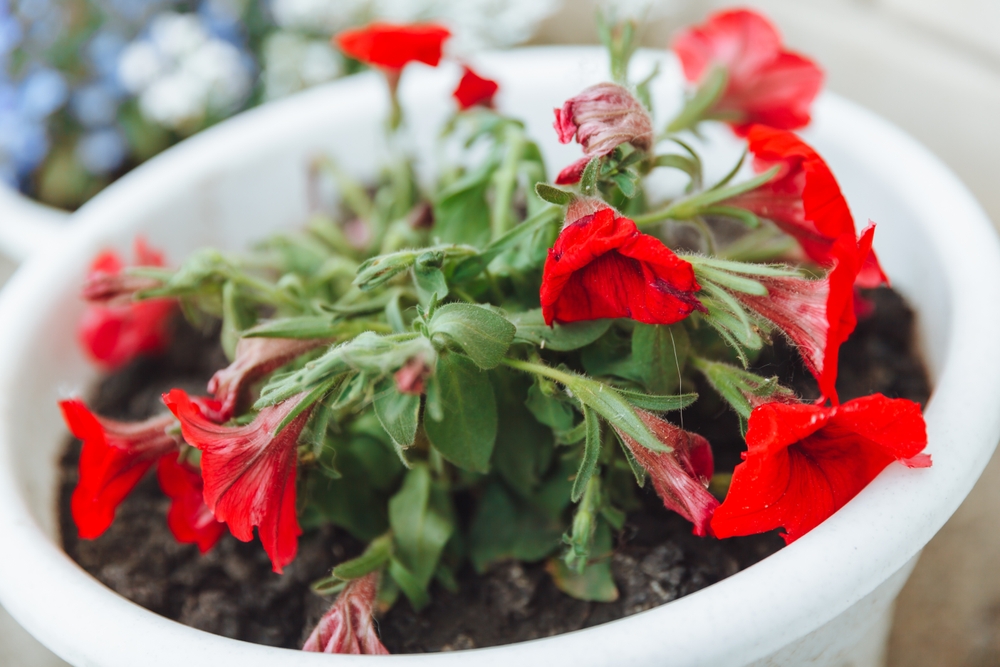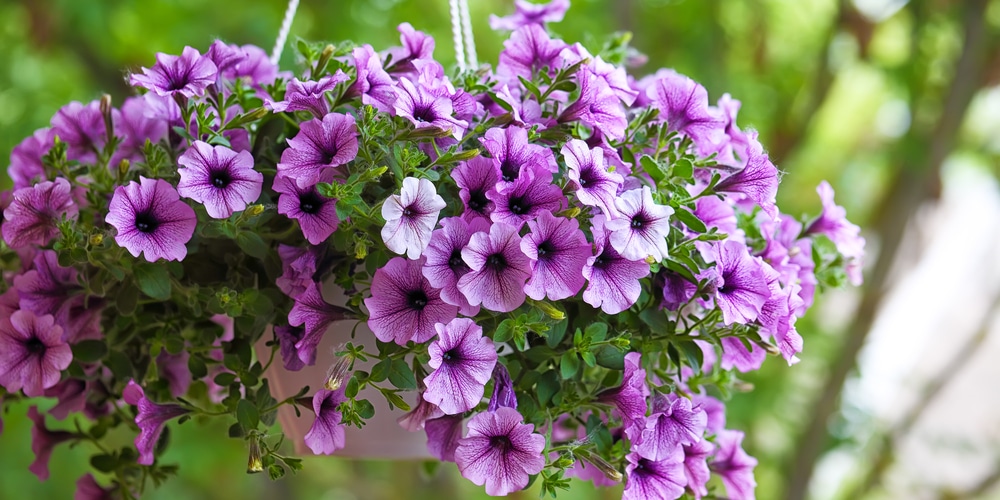Every gardener knows that it’s possible to kill your plants with love, and overwatered petunias are one way to do so. Read on to discover whether you’re guilty of this common mistake and how to water your flowers properly.
Signs That You’ve Overwatered Your Petunias
Below are the tell-tale signs that you’ve been giving your petunias too much water.
Drooping Appearance
Overwatering petunias can lead to the plant’s leaves and stems drooping. You also might notice that the leaves start to wither, and the flowers begin wilting and falling off prematurely.
The reason that petunias that get too much water droop and wilt is because they end up holding more water than nutrients. Drooping can also be from not watering your petunia enough, so a quick check with your hand to feel the soil’s moisture content can clear up your doubts.
Mold Growing in Soil
Fungus loves moist environments. So, if you notice fuzzy white or other colored mold growing on the soil around your petunias, it’s a sign that you’re overwatering them.
Mold is a two-fold problem for gardeners because it attracts fungus gnats. These gnats help keep mold concentrations in check, but most people don’t want them around their plants.
Wet Leaves
If you overwater your petunias and they’re in a high humidity environment, they’ll often develop wet spots on their leaves. These wet spots turn brown as the plant rots.
Petunias expel water through transpiration via their leaves. But if there are too many water particles in the air, they won’t be able to do so, and they’ll fill with more water than they can handle.
Yellow Leaves
Yellow leaves on petunias are another sign of overwatering. The yellowing is because you’re forcing them to replace water with some of the nutrients and oxygen they would typically get from the soil.
The result is chlorosis (yellow leaves). Chlorosis doesn’t always strike uniformly, so even if some of your petunia leaves are green, the yellow leaves could still be from too much water.
Root Rot
Root rot is one of the most common signs of overwatering in many plant species, including petunias. It’s a fungal infection that uses the moisture from excess water to grow and eat away at roots.
The result is that your petunias will show signs of weakness and nutrient deficiency until they die unless you work on reversing the issue by watering them less often.
Best Practices for Watering Petunias
Now that you know how to tell if you have a case of overwatered petunias on your hand, it’s time to learn best practices for caring for these plants.
Petunias in the ground should have a deep watering once per week. That said, hot summer days require more frequent watering, sometimes as much as twice per day.
If you keep your petunias in a hanging basket, they’ll need water more often, given that the soil will dry out faster.
The best way to tell whether your petunias need water is to stick your finger in the soil. It should feel moist about one inch beneath the dirt. If it doesn’t, it’s time to water.
Whether you have your petunias in a garden or hanging baskets, you should ensure they have good drainage. That way, excess water has an exit so that your flowers won’t suffer from the overwatering conditions discussed here.
The Bottom Line
Healthy petunias produce beautiful flowers, making them a favorite plant for gardens and hanging baskets. Once you understand the risks of overwatered petunias and get the hang of giving them the right amount of water, you can expect an entire season of healthy plants.

